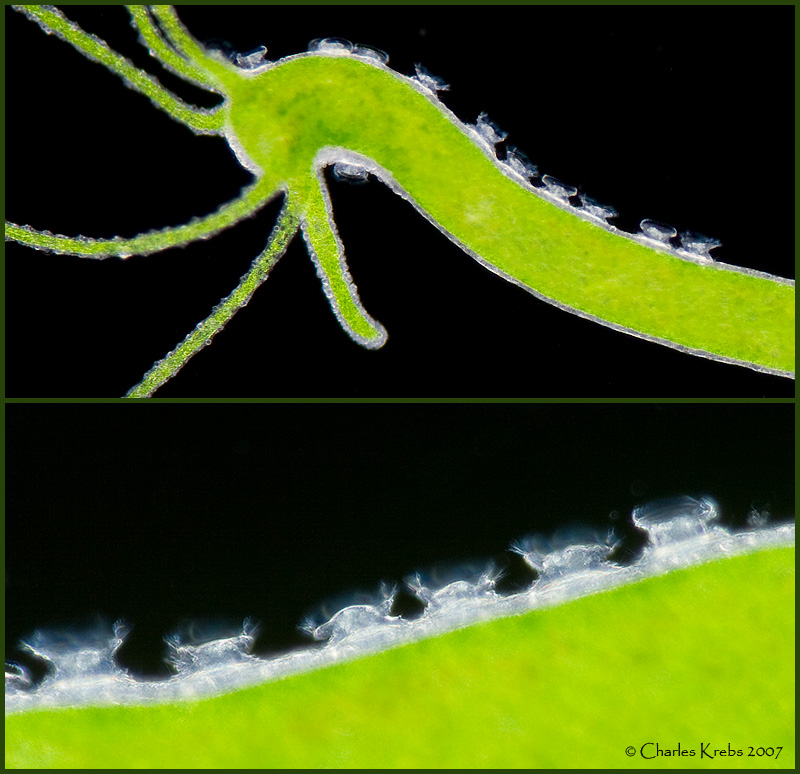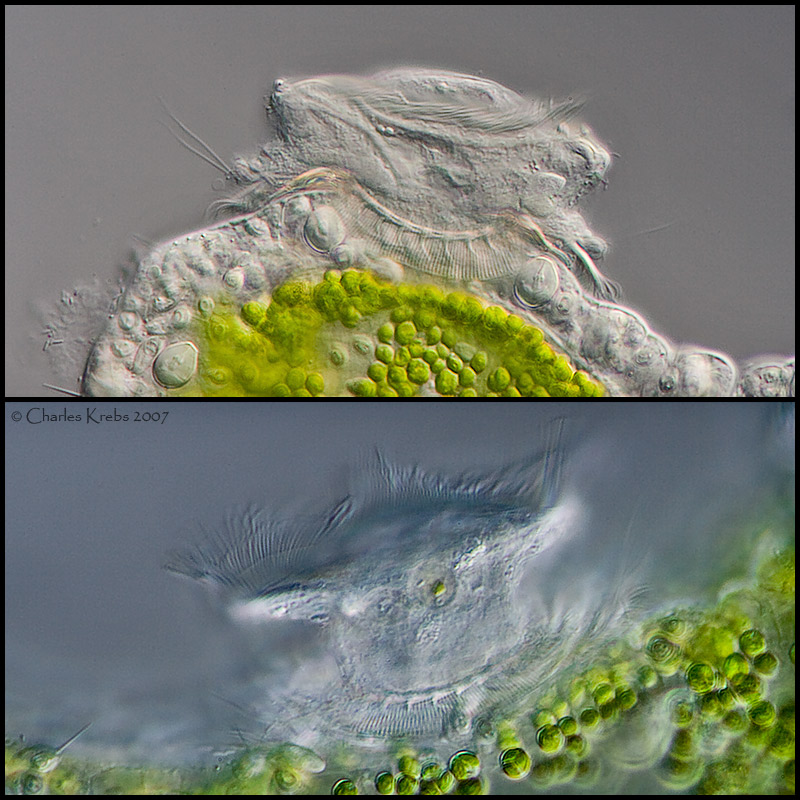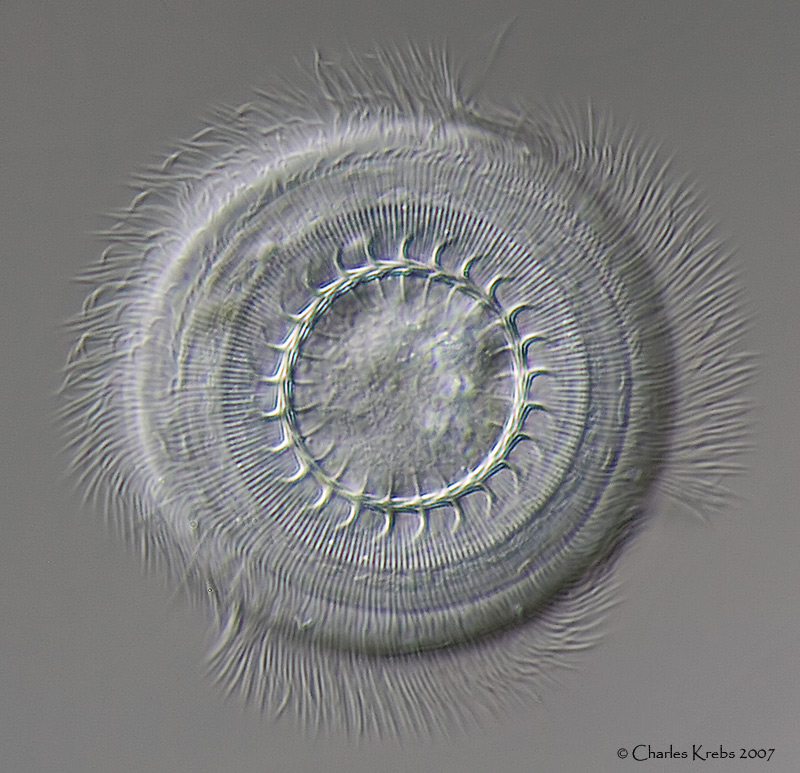It took a while to figure out the physiology of these critters! Sort of like "muffins" with a ring of cilia at the top and bottom. The most "photogenic" aspect is certainly the adhesive disc at the bottom, with its geometric ring of denticles. (Third picture). This is what it uses to hold onto its host.
I'll include a few descriptive sentences from a favorite website source:
http://starcentral.mbl.edu/microscope/p ... geid=20304The cells scurry along the surface of the host by means of the aboral cilia and adhesive disc...
The peristomal ciliary field makes 1 1/4 turns around the anterior end. The pellicle between the anterior end and aboral end is bare of cilia.
Actually not parasites, they feed primarily on bacteria that is carried to them by the motion of the anterior cilia. The "host" is merely transportation and a place to call home. But in sufficient numbers certain species can be a problem for fish, both on the skin and gills.





